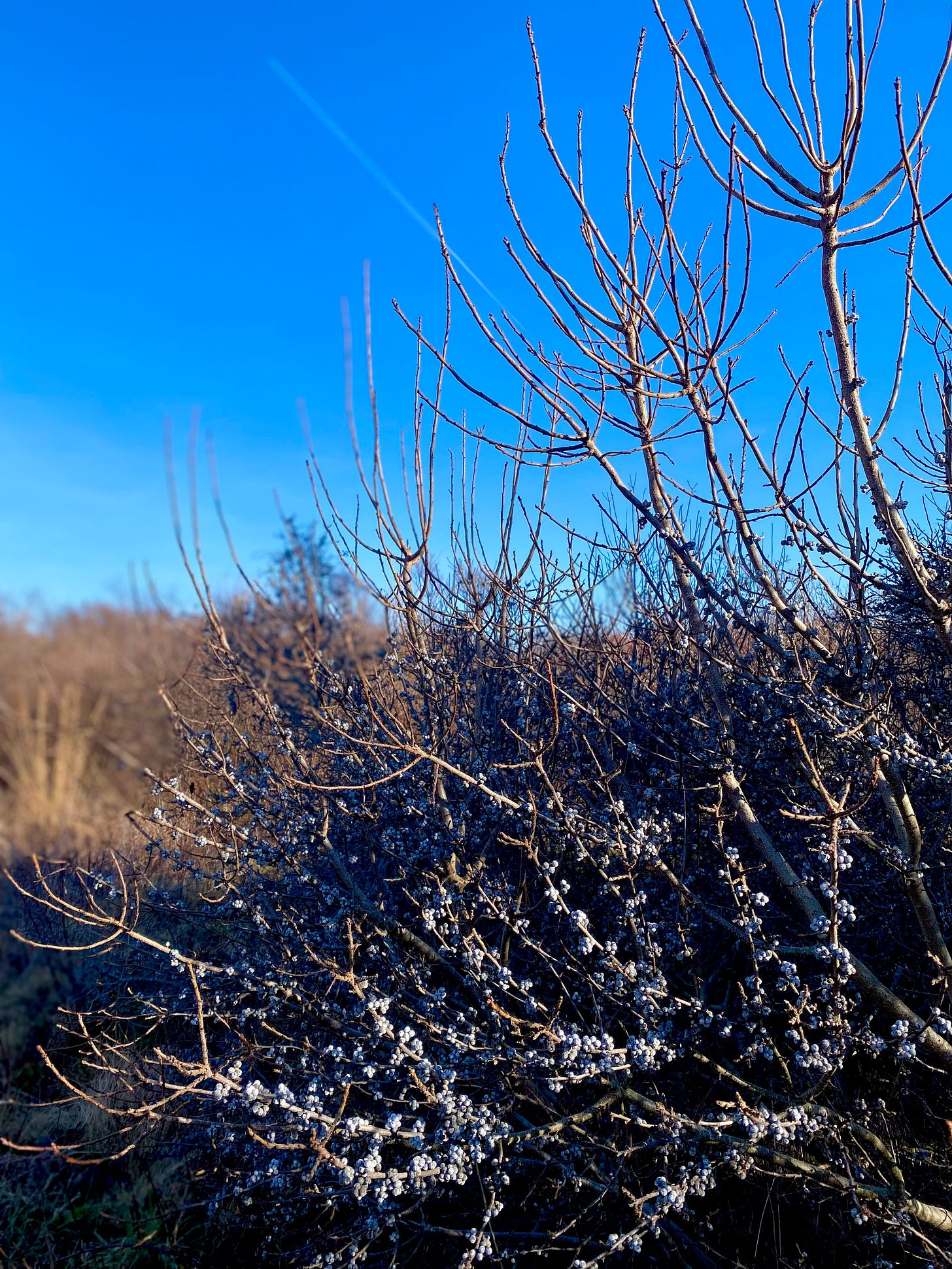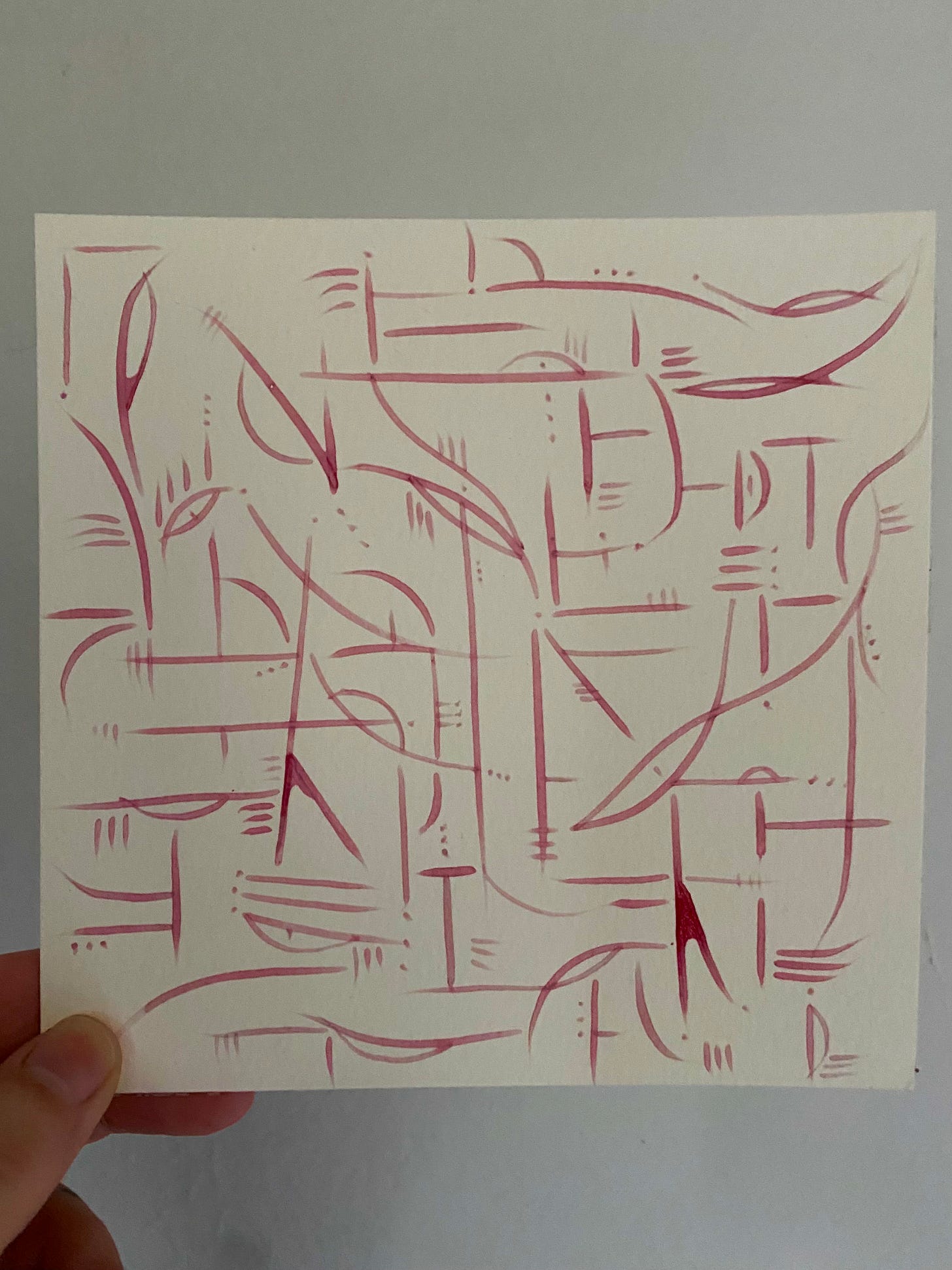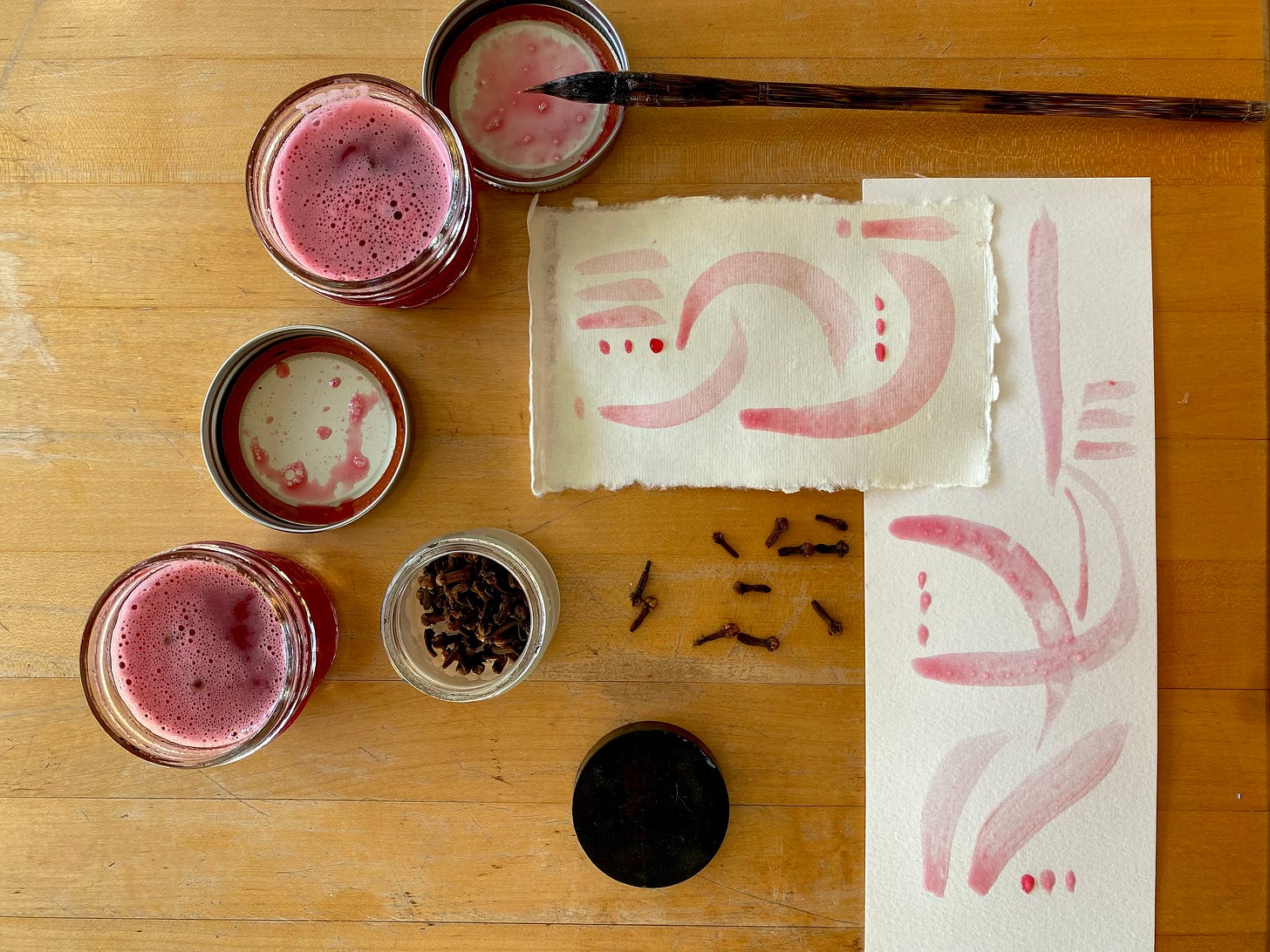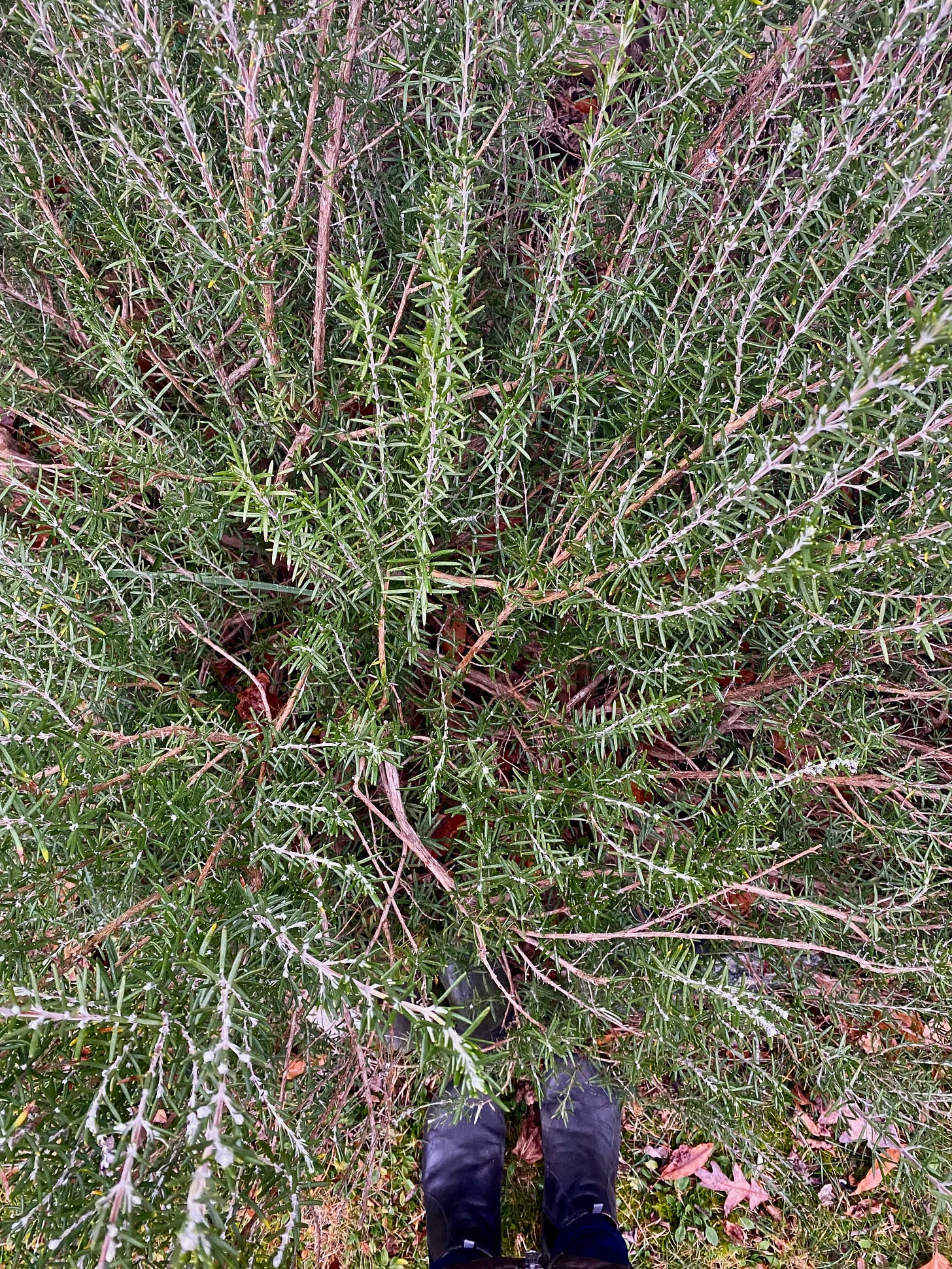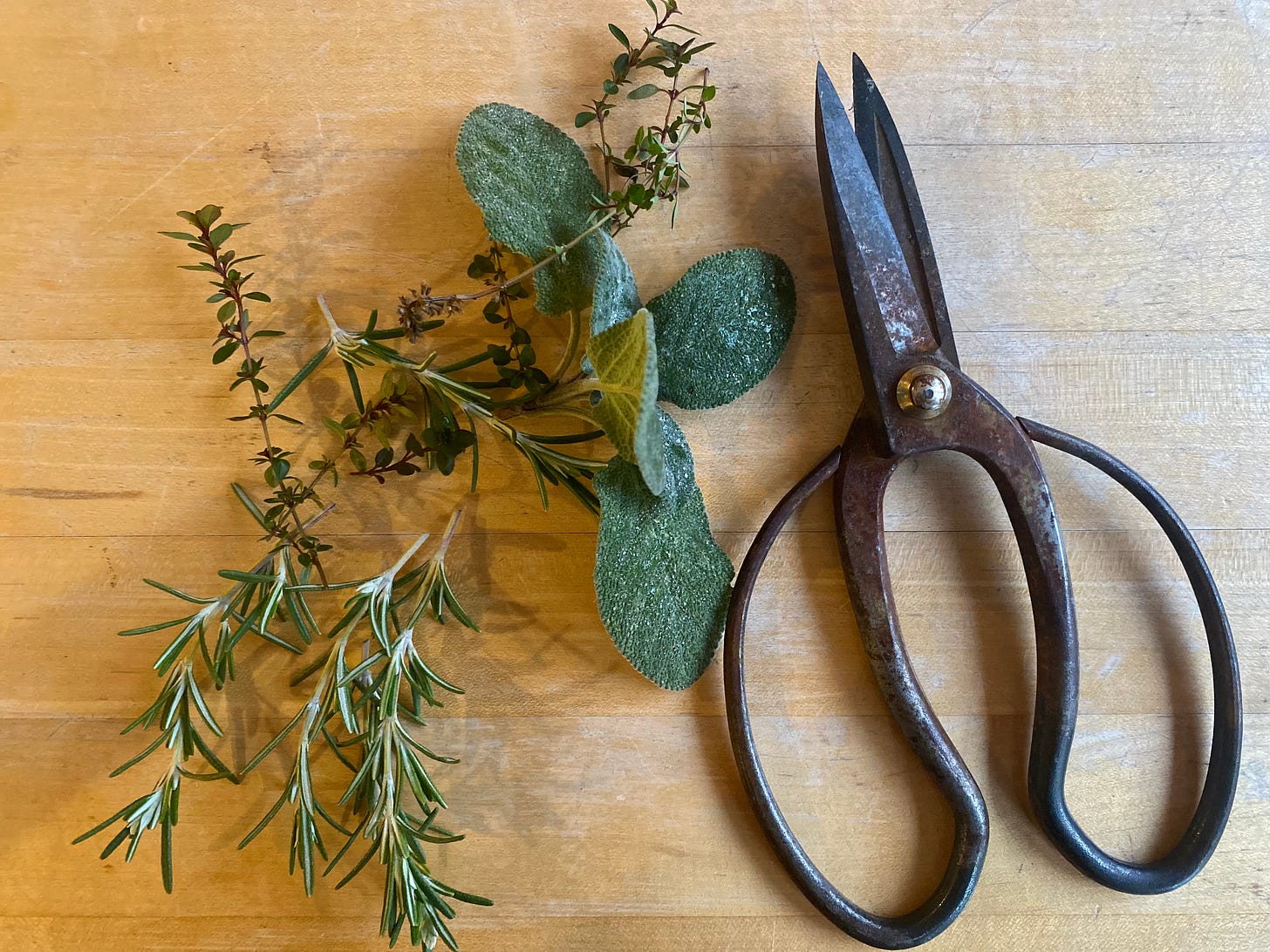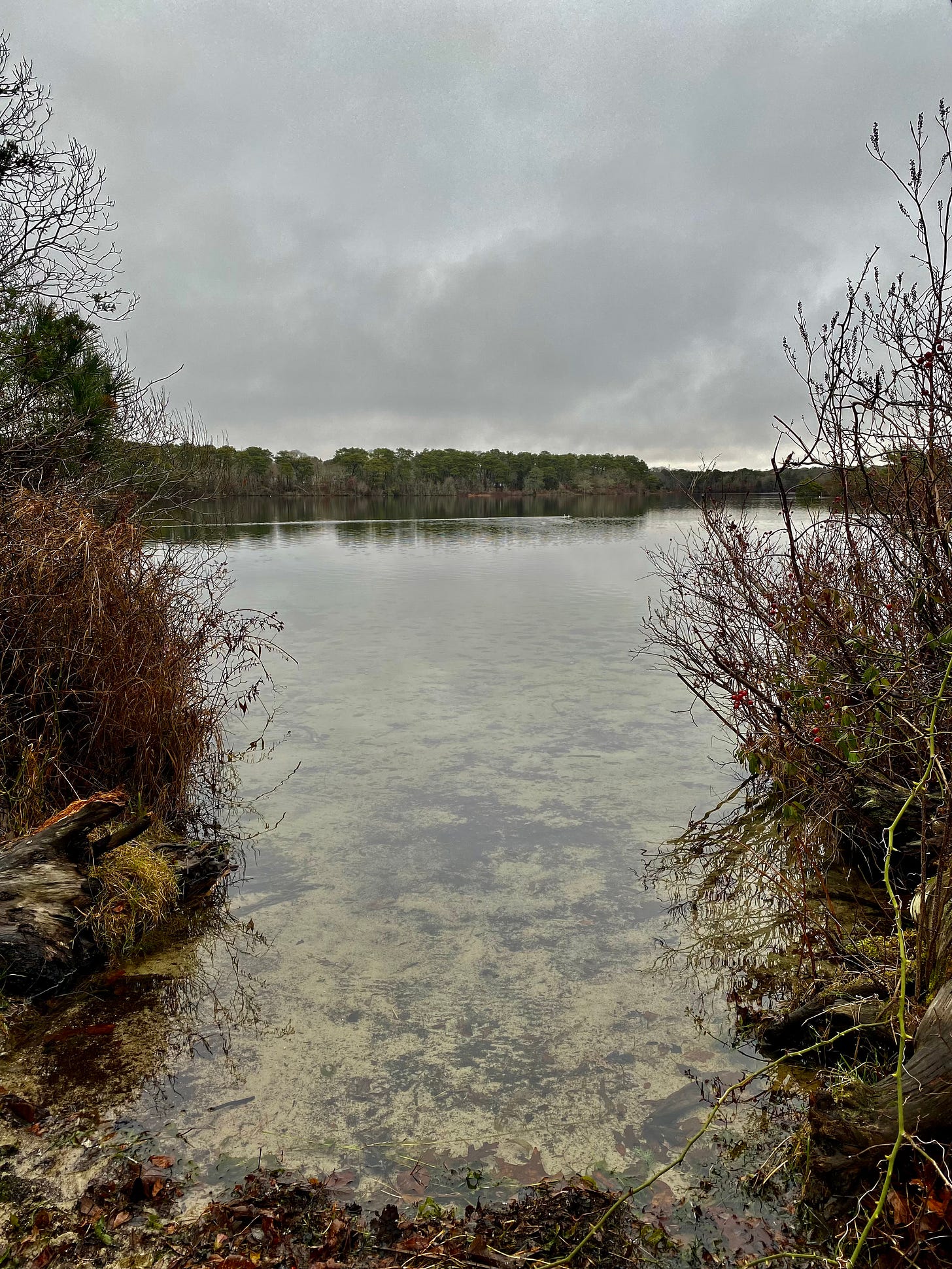I’m writing to you from a new place. And I’ve got to be honest, I’m not sure if this is the beginning, the middle or the end. I write just about everyday, so I guess I could say I’m looping you into the middle. But it is also the end of keeping things to myself. So I’ve started a Substack newsletter to share with you the things I make as a magician in the kitchen: the Ocean Effect. It is a record of the alchemical reaction of plants + the elements. It is inspired by the creative connection to nature on a sandy slip of land in the middle of the ocean. You can read more about me, why I’m doing this, and what to expect from this new version of my newsletter here.
It’s free and will show up in your inbox a couple of times a month if you’re already a newsletter subscriber. And if you are one of those folks, my thanks for following, reading, and supporting! If you’re not yet a subscriber, you can sign up here:
12.23.23
This morning, a hawk in the same place at the same time as yesterday when I open the blinds to let in the day. So cold, hoarfrost glitters on the ground and I can feel the chill seeping in through the floor of the house.
We keep getting visits from a huge flock of robins after dawn. They fill the air with songs of a pretend spring, singing to one another from across bare treetops, orange bellies visible from below. They drive the cat bananas, keeping her occupied for hours at the window.
After (much) coffee, I end up in the kitchen to make paint with cranberries leftover from holiday decorating and Christmas tree trimming. Berries + water + fire = color!
Here’s how it’s done: pour berries into a pot (I didn’t measure, but I’m guessing I had about 2 cups). Fill the pot with just enough water to cover the berries. Slowly bring to a simmer and keep it bubbling on low. Mash them up while you’re at it. Note the sweet and tangy bitter scent that fills the house. The color is vibrant pink, leaning cheerily towards magenta. Simmer for an hour or so, stirring often until it reduces and thickens. Test it on paper. (If the paper is acidic, the color reacts to the lower pH by turning purplish as it dries.) Turn off the heat when you like the consistency. Slip some cheesecloth over a mesh sieve, place this over a bowl, and pour in the paint. Allow to drain, and once cool, squeeze out any remaining paint from the cheesecloth into your bowl. I ended up with about a cup of paint. Pour the color into a jar and add about a teaspoon or so of gum arabic and a few cloves to help keep mold from growing in your paint. (If it does, do not fret. Just remove it and keep on painting.) Cap with a lid and shake well.
12.24.23
There have been so many sunless, grey days lately. This un-color seems to make every other color more rich and vibrant. Wet bark painted black. Lichen in unreal greens, neon and alien-like amongst the natural palette of the dunes; yet they are a sign of a breathing, healthy landscape. On my walks, the ocean fades to darkness in front of me as it spreads towards the horizon at the curve of the earth. Sky dusted with clouds up to the heavens and galaxies and stars beyond. I can forget everything going on behind me where the world has gone mad.
Thomas and I walk the trail from Wireless Road in Wellfleet to the dunes overlooking the beach and then through the white cedar swamp. The National Park Service says it’s “an isolated remnant of an ecosystem created after the last ice age and now normally found in mid-Canada or farther north”. Winterberry, inkberry, swamp maple grow throughout, tucked between cedar, both alive and dead and leaning crazily about. I wonder aloud if the bumps and burls on the trunks are signs of recovery after bad weather. Were these trees bent back by the winds of some chaotic superstorm? Did they somehow continue on in the face of the elements realizing they were the last of their kind? Thomas and I reminisce about our first walk to this place many years ago and the time we saw not one, but TWO! owls on the outskirts of the forest near the trail by the cemetery.
12.27.23
Back home, my garden is soaked and sleeping. Droplets of rain hang like Christmas lights on branches and evergreens. The garlic I planted in late October lays dormant (for now) under a blanket of raked up leaves and salt marsh hay washed up from high tide - devils purse, seaweed, the cast off claws of sea creatures in the mix. I snip some perennial herbs for dinner: roasted chicken cooked in my favorite cast iron pan. Rosemary, sage, thyme - they’re still verdant and alive. Their scent on my hands brings me back to full summer when the sun held court high in the sky and bees and butterflies worked alongside me in the garden, all of us harvesting the fruits of the season.
But now the sun has slipped lower in the sky and the days are so, so short. I start dinner early. Salting the chicken, cracking pepper over the bird before it rests in the fridge. I chop some mushrooms (shiitake) and toss them in the cast iron pan I spoke so fondly of. A drizzle of olive oil, more salt and pepper, and some summer thyme before roasting the mushrooms at 400 until they’re a bit crispy. The mushrooms come out and I add the bird to the hot pan and stuff it with the herbs before roasting for an hour or so. It sizzles while it cooks and scents the house with memories of summer, of family dinners, of winter coziness and crackling fires. After an hour, I baste the bird with the juices from the pan, check the temperature, and snack on a few of the crispy mushrooms I set aside. Finally, the bird comes out of the oven for resting. I forget to take a picture before taking it out of the pan but remember the mushrooms and add them in for a quick gravy. Mashed potatoes (sweet + white) and some random leftover pea shoots for the sides. The kitchen is a glorious, splattered mess. Thomas slices the bird and we fill our plates and bellies and come back for more.
12.29.23
A quick walk along Nickerson conservation trail on the lookout for orange winterberry. There is a cluster that grows out of reach in the bramble near the edge of Widow Harding Pond, but I discover the birds of this forest have seen to most of the berries, orange and red alike. A handful of birch stand tall and stark, alone amongst pine and oak. A few prickly holly bushes and way too much privet grow in the understory. I hear voices carrying across Great Pond as I follow the trail to this larger nearby kettle hole and swimming spot. Thomas likes to fish the eastern side of the pond. In the summer we usually stop for a quick dip on our way home from the beach, feeling fortunate that we get to experience the waters of both ocean and pond all in the same day. The sound of a nail gun and the thrum of its compressor reminds me of where I am now. The pond is smooth on this windless day, rippling here and there as birds land on the glassy surface. An ancient glacier once stood here, left behind as the ice pushed and pulled and carved this place I call home into shape. A few dogs bark, a rooster crows and I head back to my truck.





